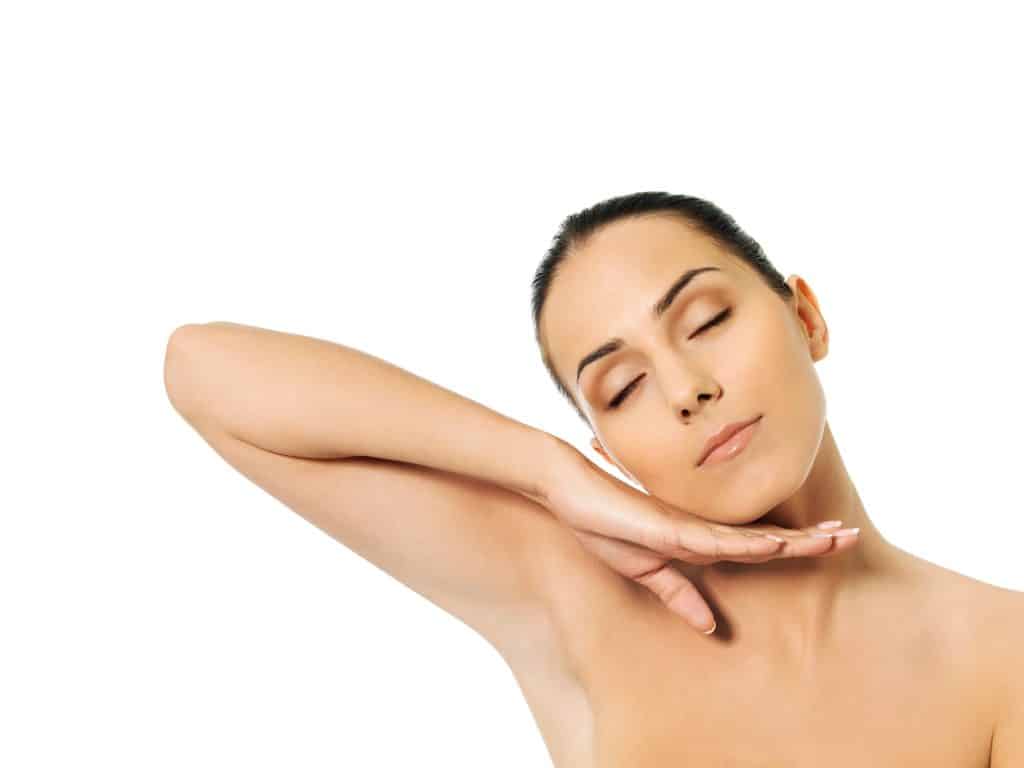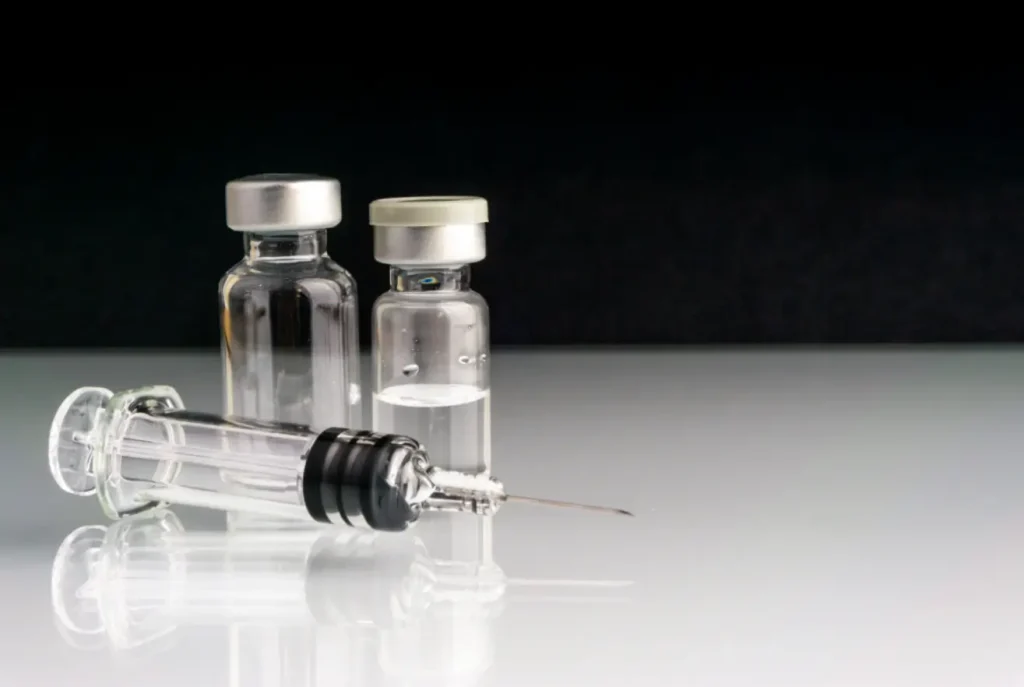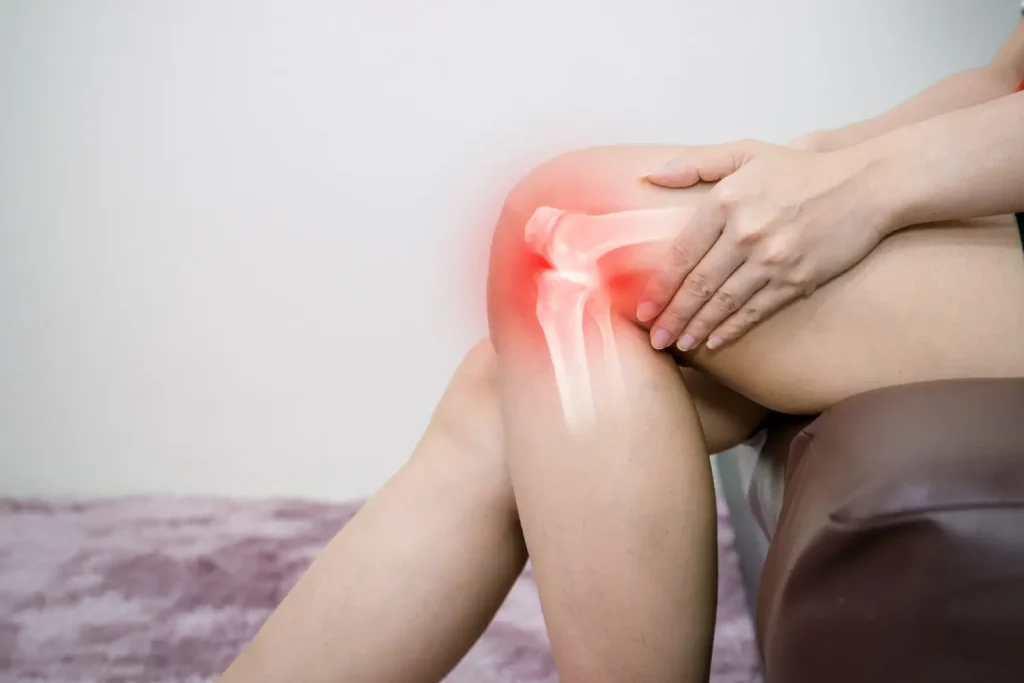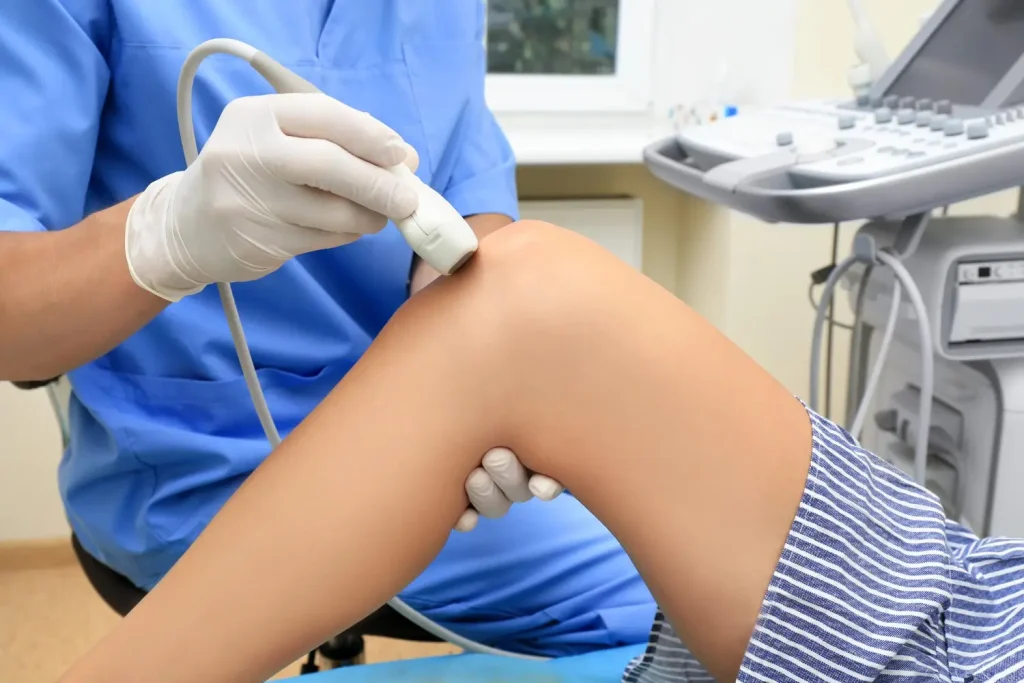Many think injections like Xeomin are only for smoothing wrinkles on the face. But there’s so much more to this treatment. With a unique ability to relax muscles, Xeomin offers benefits in other areas of the body too.
This article shines a light on these lesser-known uses, providing insights that could change how we approach treatment.
As someone with years of experience in administering neurotoxin therapies, including Xeomin, I’ve seen firsthand its versatility beyond facial aesthetics. This piece draws from that background, aiming to broaden your understanding and application of Xeomin therapy.
Key Takeaways
- Xeomin is a botulinum toxin that helps relax muscles, not just on the face but also for other body parts like neck and limbs. It can treat conditions like muscle spasticity and excessive sweating.
- The treatment involves injections directly into specific muscles needing relaxation or sweat reduction. Results usually appear in a few days, with full effects visible within two weeks.
- Doctors carefully choose patients for Xeomin based on their health history and goals. They make sure each person understands what to expect from the treatment.
- Researchers have found Xeomin safe and effective when used in areas beyond the face. This includes helping children with stiff leg muscles move better.
- Healthcare providers use precise dosages and injection techniques tailored to each patient’s needs, ensuring safety and optimizing outcomes.
Understanding Xeomin and Its Mechanism of Action

Xeomin is a Botulinum Toxin Type A that works by blocking the transmission of acetylcholine from neurons to muscles. This action prevents muscle contractions, leading to a reduction in lines and wrinkles.
On my first encounter with Xeomin treatment as a healthcare provider, I noticed its unique ability to inhibit these nerve signals effectively. Unlike other brands, Xeomin does not contain complexing proteins, which may contribute to its precise effects on targeted muscles.
This neurotoxin’s mechanism involves temporary inhibition of muscle activity and modulation of neurotransmitter release. Such characteristics make it an excellent choice for addressing conditions beyond cosmetic concerns like hyperhidrosis and dystonia in non-facial areas.
The diffusion aspect of Xeomin—a passive dispersion beyond the injection site—emphasizes the need for accuracy in application but also highlights its potential for broader therapeutic use.
Let’s now look into how this applies outside traditional facial aesthetics.
Overview of Xeomin
Xeomin is a type of botulinum toxin that doctors use to treat muscle spasms and wrinkles. It works by blocking the signals from nerves to muscles, making them relax. This action helps reduce the look of lines on the face and can also ease muscle conditions in other parts of the body.
Patients often choose Xeomin for its purified formula, which means it has fewer proteins around the toxin compared to other brands like Botox. This can lower chances of patients forming antibodies against it, leading to more consistent results over time.
Doctors inject Xeomin directly into muscles that need treatment. The process usually takes only a few minutes and doesn’t require anesthesia. Patients might start seeing effects as soon as three days after getting their shots, but full results typically show within two weeks.
Side effects are rare but may include swelling or redness at the injection site, headache, or tiredness.
Xeomin’s targeted approach and what it is used for opens up new possibilities for treating various muscle-related conditions beyond facial aesthetics.
Moving on, let’s explore how Xeomin therapy extends its benefits beyond facial treatments into managing conditions associated with muscle spasticity and hyperhidrosis in non-facial areas.
Mechanism of action: temporary inhibition of muscle activity and modulation of neurotransmitter release
Botulinum neurotoxin type A, which is the active ingredient in Xeomin, works by blocking the nerve signals that cause muscles to contract. This action leads to a temporary reduction in muscle activity.
When injected, it stops acetylcholine, a neurotransmitter responsible for triggering muscle contractions, from being released at the nerve endings. This process effectively relaxes the targeted muscles and reduces unwanted movements or spasms.
Beyond causing muscle relaxation, botulinum neurotoxin type A also plays a role in modulating neurotransmitter release. It can either inhibit or promote the release of these chemical messengers at synaptic sites.
This dual function—relaxing muscles and influencing neurotransmitter activities—makes Xeomin an effective treatment for various conditions beyond cosmetic enhancements. Its use extends into treating muscle spasticity and certain neurological disorders by capitalizing on its mechanism of temporarily inhibiting muscle activity and adjusting neurotransmitter dynamics within the body.
Non-Facial Injection Sites for Xeomin Therapy

Xeomin therapy extends beyond the face to treat muscle spasticity in areas like the neck, upper limbs, and lower limbs. Doctors use it for conditions where muscles contract too much.
This helps patients move better and eases their discomfort. I’ve injected Xeomin into a patient’s neck muscles to reduce stiffness and pain caused by spasticity. The relief they experience can significantly improve their daily activities.
In addition to treating spasticity, Xeomin is effective against dystonia in nonfacial areas and excessive sweating (hyperhidrosis) not related to the face. For instance, injecting Xeomin into the palms or underarms can decrease sweating when antiperspirants don’t work well enough.
This offers patients a long-awaited solution for managing symptoms that other treatments have failed to address adequately.
Treating muscle spasticity in the neck
Doctors often turn to XEOMIN for treating cervical dystonia, a tough condition marked by severe neck muscle spasticity. This FDA-approved treatment directly targets the muscles affected, offering patients relief from the uncomfortable and often painful postures their bodies were previously forced into.
From my experience, seeing a patient’s quality of life improve dramatically after starting XEOMIN therapy is incredibly rewarding. The transformation can be remarkable as they regain movement and comfort that was once lost.
XEOMIN has changed the game in treating cervical dystonia – it’s not just about managing symptoms but significantly improving lives.
Addressing upper limb conditions
XEOMIN® offers a targeted approach to treat adults with upper limb spasticity. This treatment can greatly improve symptoms like muscle stiffness and spasms. From my experience, patients report significant relief and enhanced mobility after receiving XEOMIN® injections for their upper limb conditions.
The procedure involves carefully calculated doses, ensuring personalized care tailored to each individual’s specific needs.
In an initial study focusing on incobotulinumtoxinA, used in treating upper limb spasticity, it was noted that no patients developed neutralizing antibodies (NAbs) during the main period or extension phase.
This finding underscores XEOMIN®’s efficacy and safety profile for long-term use in managing upper limb spasticity in adults. My practice has seen many success stories where patients regained much of their lost function and enjoyed a better quality of life post-treatment.
Managing lower limb muscle spasticity
Doctors use Xeomin to help children and teenagers who have stiff muscles in their legs. This treatment can make walking and moving around easier for them. It works by calming the muscles, so they are not too tight.
I saw this firsthand when a young patient could finally play soccer with less difficulty after receiving Xeomin injections.
Many times, patients might not see results because the dose was too low or the shot was given in the wrong place. Getting it right means choosing the correct muscle and amount of medicine.
In my practice, careful planning and precise injections lead to better outcomes for those dealing with lower limb spasticity.
Other nonfacial areas affected by dystonia and hyperhidrosis
XEOMIN can target muscles in the neck, arms, and legs that suffer from dystonia. This condition makes muscles contract uncontrollably. XEOMIN injections relax these muscles and help reduce unwanted movements or stiffness.
XEOMIN is also effective against hyperhidrosis in areas like underarms, hands, and feet where excessive sweating occurs without high temperatures or physical activity.
Patients with these issues find relief as XEOMIN cuts down on sweat production. The treatment improves their comfort and quality of life significantly.
Rationale for Non-Facial Use of Xeomin
Doctors often use Xeomin to smooth out facial lines, harnessing its power to relax muscles under the skin. Yet, this approach has broader applications beyond cosmetic enhancements.
I’ve seen firsthand how Xeomin therapy extends its benefits to various non-facial conditions. For example, it can significantly reduce muscle spasticity in the neck and limbs, offering relief where standard treatments fall short.
This application underscores Xeomin’s versatility and capability of improving functional outcomes for patients who struggle daily with these debilitating issues.
The targeted muscle-relaxing effects of Xeomin also play a crucial role in enhancing patients’ quality of life by managing symptoms related to dystonia and hyperhidrosis in areas other than the face.
Crafting individualized treatment plans becomes essential here as each case presents unique challenges and needs different levels of intervention. From my experience, optimizing doses for non-facial injections requires careful assessment but results in meaningful improvements for those affected by these conditions—highlighting the importance of exploring all possible uses for Xeomin therapy within medical practice.
Targeted muscle relaxing effects
Xeomin therapy offers precise muscle relaxation beyond the face. This treatment works by blocking signals from nerves to muscles, leading to a decrease in unwanted muscle activity.
For patients with conditions like dystonia or spasticity, Xeomin can specifically target affected muscles without impacting neighboring areas. This precision helps improve their quality of life and functional outcomes markedly.
The use of Xeomin for targeted muscle relaxing effects is approved and well-regarded among medical professionals. It not only reduces symptoms but also supports better posture and movement in patients with various muscular conditions.
The versatility of Xeomin shows promise across different non-facial applications, highlighting its potential beyond cosmetic enhancements.
Potential benefits for improving functional outcomes and quality of life
Moving from the targeted muscle-relaxing effects of Xeomin, we explore its role in enhancing patients’ lives significantly. This therapy offers more than just temporary relief. It paves the way for improved daily functioning and a better quality of life.
Patients with facial paralysis and asymmetry have found solace in Xeomin’s potential to restore balance and symmetry to their features. This restoration not only impacts their physical appearance but also boosts their emotional well-being.
Xeomin therapy has shown to significantly increase quality of life for patients with unilateral facial palsy.
The impact extends beyond aesthetics; it plays a crucial part in rehabilitating muscles for those struggling with various limb spasticities—granting them enhanced mobility and freedom they might not have experienced otherwise.
Each injection is tailored, focusing on specific areas that require attention, making everyday tasks easier and improving overall life satisfaction for individuals dealing with dystonia or hyperhidrosis outside the face.
Importance of individualized treatment plans
Improving functional outcomes and quality of life leads naturally to the importance of individualized treatment plans in Xeomin therapy. Personalizing these plans is crucial because each patient’s body reacts differently to treatments.
For instance, what works for dystonia in one patient might not be as effective for another due to variations in muscle spasticity and the area affected. An approach tailored to each person’s needs ensures that they receive the most appropriate dosage and injection sites, optimizing the chances of a successful outcome.
Creating these personalized plans requires careful assessment of each patient’s specific conditions and desired results. This process highlights why it’s essential for medical professionals to consider factors like previous responses to treatments such as Botox or other botulinum toxin types, personal comfort with injections, especially given some patients’ preference for warmer injections being more comfortable than others, and their overall health profile.
Acknowledging these details helps tailor a strategy that maximizes effectiveness while minimizing discomfort or potential side effects—a key aspect when aiming for natural-looking rejuvenation that aligns with the patient’s vision of themselves.
Practical Considerations for Non-Facial Xeomin Injections
Practical considerations for non-facial Xeomin injections are crucial for medical professionals. They help ensure patient safety and optimize treatment outcomes.
Dosage optimization
Optimizing the dosage of Xeomin is key to achieving the best outcomes for patients. From my experience, high-dose regimens as high-concentration injections lead to more effective results.
Every patient comes with distinct needs and responses to treatment. This means that the exact dosage and number of injection sites must be carefully decided for each individual.
I’ve learned that starting with a lower dose allows us to gauge how well a patient responds before making adjustments. This approach has proven beneficial in minimizing side effects while ensuring optimal benefits.
Monitoring how long until Xeomin works in each case helps tailor future treatments more precisely, enhancing both safety and efficacy for our patients.
Injection technique for nonfacial areas
Selecting the right injection technique for nonfacial areas is vital. Experts often target muscles like the trapezius and gastrocnemius for Xeomin therapy. They consider muscle size, depth, and the specific condition being treated.
Precise targeting ensures optimal results while minimizing diffusion of the toxin.
For each patient, healthcare providers craft a unique plan. They adjust dosages based on muscle mass and desired outcomes. Careful assessment before injection helps tailor treatment to individual needs, ensuring both safety and effectiveness in managing conditions such as dystonia or hyperhidrosis beyond the face.
Patient selection criteria
Choosing the right patients for Xeomin therapy is crucial. Adults experiencing aging skin and dynamic wrinkles that show with facial movements are ideal candidates. These individuals often seek improvements in appearance but must have realistic expectations about what Xeomin can do for them.
Patient selection also involves considering their specific treatment areas, aesthetic goals, and tolerance for treatment.
Doctors need to ensure patients understand the potential outcomes of Xeomin injections. It’s important they know how long it will take to see results and how often they can receive treatments.
This understanding helps set clear expectations and contributes to patient satisfaction. Next, we’ll discuss the importance of proper patient assessment, education, and follow-up care.
Importance of proper patient assessment, education, and followup care
After pinpointing who might benefit most from Xeomin injections, it’s vital to focus on comprehensive patient evaluation. Each person’s health profile and medical history play a key role in planning successful Xeomin therapy.
Proper assessment ensures that Xeomin is safe and likely to be effective for them. Healthcare providers must gather detailed information about the patient’s condition and explain how treatment areas beyond the face can help.
Patient education goes hand in hand with assessment. I’ve seen firsthand how explaining the process makes patients more comfortable and willing to follow through with non-facial Xeomin treatments.
They need clear instructions on post-care and what activities they should avoid after getting Xeomin. Regular follow-up care allows us to monitor their reaction to the treatment, adjust doses if necessary, and see real improvements over time.
Clinical Evidence and Research Supporting Non-Facial Use of Xeomin
Clinical evidence and research are key to understanding the effectiveness of Xeomin for non-facial uses. Studies have shown that this treatment is both safe and effective when used on areas beyond the face, such as for treating upper limb spasticity in children.
Researchers found that Xeomin can provide significant relief without causing major side effects, making it a promising option for many patients.
Xeomin has proven efficacy and tolerability in diverse therapeutic areas.
Doctors across different medical specialties increasingly accept Xeomin’s utility outside traditional cosmetic applications. Their experiences, backed by growing clinical trials, highlight its potential to improve functional outcomes significantly.
With each study conducted, the body of evidence supporting the broad applicability of Xeomin continues to expand, encouraging more healthcare providers to consider its use for various conditions requiring muscle relaxation or sweat reduction.
This growing acceptance underlines the need for ongoing education about how to integrate Xeomin treatments into broader medical practice effectively.
Growing acceptance in diverse medical specialties
Xeomin, known for its botulinum toxin properties, is finding its place across diverse medical specialties. Reports show a 52% overall acceptance of complementary and alternative medicine (CAM) with Family Medicine leading, followed by Psychiatry and Neurology.
This broad acceptance reflects an openness among healthcare professionals to explore Xeomin beyond traditional facial applications. The therapy’s ability to temporarily inhibit muscle activity and modulate neurotransmitter release makes it appealing for treating conditions like muscle spasticity and hyperhidrosis in non-facial areas.
Doctors from various fields are now considering Xeomin for their treatment plans. They appreciate the targeted muscle-relaxing effects that can significantly improve functional outcomes and patients’ quality of life.
This shift towards embracing Xeomin in treatments outside the face encourages more personalized care approaches, aligning with modern medical practices’ evolution. As research evolves, so does the confidence in incorporating Xeomin into broader therapeutic contexts.
Key studies and clinical trials demonstrating efficacy and tolerability
Recent clinical trials have spotlighted Xeomin’s effectiveness beyond facial applications, specifically in treating conditions like blepharospasm and upper limb spasticity. These studies reveal that Xeomin offers a comparable potency to Botox for blepharospasm treatment while maintaining a strong safety profile.
Researchers have found its muscle-relaxing effects to be beneficial across various non-facial areas, underlining its versatility as a therapeutic agent.
With nearly 15 years of global experience, Xeomin continues to prove itself in the medical community. Its efficacy and safety are well-documented through extensive research, supporting its use in both facial and non-facial treatment areas.
This body of evidence encourages healthcare providers to consider Xeomin for a broader range of conditions, highlighting the importance of individualized patient plans.
Moving on, recommendations for healthcare providers will build on this foundation…
Recommendations for Healthcare Providers
Healthcare providers play a crucial role in expanding the beneficial uses of Xeomin beyond aesthetic enhancements. They have the opportunity to offer patients with movement disorders new hope and improved quality of life. Here are practical guidelines for incorporating Xeomin therapy for nonfacial indications into medical practice:
- Stay Informed About FDA Approvals: Keep up-to-date with current FDA-approved uses of Xeomin, including its application for conditions like cervical dystonia and upper limb spasticity. Understanding its approved applications ensures treatments comply with regulatory standards.
- Understand Patient Needs: Conduct thorough assessments to understand each patient’s specific condition, focusing on how Xeomin can improve their condition and overall quality of life. Tailoring treatment plans to individual needs is key.
- Dosage and Technique Precision: Master the art of dosage optimization and injection technique for nonfacial areas. This skill is critical as it impacts the effectiveness and safety of the treatment.
- Educate Your Patients: Spend time educating your patients about what Xeomin is made of, how long it takes to work, and what they can expect in terms of results and post-care requirements.
- Evaluate Patient Eligibility Carefully: Not every patient will be a good candidate for Xeomin therapy. Establish clear selection criteria based on medical history, current health status, and specific needs.
- Promote Regular Follow-Up Care: Encourage regular follow-up appointments to monitor progress, manage any side effects, and adjust treatment plans as necessary.
- Share Clinical Evidence: Familiarize yourself with key studies and clinical trials that support the use of Xeomin for nonfacial conditions. Sharing this data can help build trust with patients by showcasing the evidence behind your recommendations.
- Collaborate With Other Specialists: Work closely with specialists in neurology, physical therapy, and other relevant fields to provide a multidisciplinary approach to patient care.
- Offer Comprehensive Patient Education: Beyond informing about xeomin post care or what not to do after xeomin injections, provide resources that cover all aspects of their treatment journey—from initial consultation through follow-up care.
- Guide On Insurance Coverage: Help patients navigate insurance coverage options for Xeomin treatments whenever possible, making the process less overwhelming for them.
Practical guidelines for incorporating Xeomin therapy into practice for nonfacial indications
Begin with assessing the individual needs of each patient. This step is crucial for determining the correct dosage and frequency of Xeomin injections. Since every patient has different conditions, their treatment plans should be unique to them.
Focus on the size, number, and location of muscles that require treatment. Personalizing therapy in this way ensures better outcomes and more satisfactory results.
Educate patients about what to expect during and after Xeomin therapy. Clear communication helps set realistic expectations and fosters trust between healthcare providers and patients.
Also, ensure you have a solid understanding of the anatomy surrounding nonfacial injection sites. Proper technique is key for minimizing risks and maximizing the therapeutic benefits of Xeomin for conditions such as chronic sialorrhea or muscle spasticity beyond the face.
Always follow up with your patients to monitor progress and adjust treatments as necessary.
Empowering healthcare providers to explore the full potential of Xeomin beyond the face
Healthcare providers have the chance to fully use Xeomin for conditions far beyond facial wrinkles. This includes treating muscle spasticity in children and adults, as shown safe and effective in pediatric populations.
Providers can guide patients through these less-known benefits of Xeomin, opening doors to improved functional outcomes and quality of life.
By incorporating Xeomin therapy into various treatment plans for non-facial indications, medical professionals expand their practice’s scope. They meet patient needs more comprehensively.
With a 1:1 conversion ratio with Botox, adjusting treatments is straightforward, ensuring seamless care transitions. This approach also strengthens patient trust by offering diverse and effective treatment options.
Summary/Conclusion
While Xeomin is best known for smoothing facial wrinkles, this neurotoxin injection offers many therapeutic benefits beyond cosmetic facial treatments. Healthcare providers are increasingly utilizing Xeomin to manage various conditions involving muscle spasticity, dystonia, and excessive sweating (hyperhidrosis) in non-facial areas of the body.
Clinical evidence supports the efficacy and safety of using Xeomin injections to treat cervical dystonia causing neck muscle stiffness/spasms, upper limb spasticity impairing arm movement, and lower limb spasticity in children hindering mobility. Xeomin can also reduce excessive underarm sweating and hyperhidrosis of the hands/feet when topical treatments are ineffective.
As research expands into these non-cosmetic applications, Xeomin therapy is gaining acceptance across diverse medical specialties like neurology and physical therapy. Properly trained providers can improve patients’ functional outcomes and quality of life through targeted, precise Xeomin injection techniques optimized for the specific muscles involved.
To successfully integrate non-facial Xeomin treatments, healthcare practitioners must stay updated on approved uses, carefully select and educate eligible patients, determine personalized dosing, and promote regular follow-up monitoring. Interdisciplinary collaboration is key for providing comprehensive, multidisciplinary care plans.
With its versatility, growing clinical backing, and potential to enhance lives, exploring the full range of non-facial Xeomin injection applications allows providers to deliver diverse, innovative therapies that create impactful improvements for their patients beyond cosmetic enhancements alone.
About: Medical Spa RX equips medical practices with premium products and essential information, like “how often can you get Xeomin,” to ensure optimal patient care. We provide safe options such as the rigorously tested Ellanse filler at competitive prices. Our straightforward and easy-to-navigate purchasing process helps you quickly access other popular, reliable brands like Profhilo. Additionally, we offer special discounts, wholesale rates, and free shipping for bulk purchases, allowing your practice to maintain a comprehensive stock and consistently keep a range of treatments available.
FAQs
1. What is Xeomin and how does it work?
Xeomin, a type of botulinum toxin, works by relaxing muscles where it’s injected. It’s FDA-approved and often compared to Botox for its ability to smooth wrinkles. Unlike fillers, Xeomin targets muscle activity beneath the skin.
2. Can you use Xeomin for areas other than the face?
Yes! While many know about its effects on crow’s feet and facial lines, Xeomin can also be used in non-facial areas. Doctors have explored treating conditions like muscle stiffness in various parts of the body with this versatile treatment.
3. How long does it take to see results from Xeomin injections?
After receiving a Xeomin injection, patients typically start seeing noticeable improvements within a few days—full results may take up to two weeks to appear.
4. Is there a difference between how often you can get Xeomin injections for facial vs non-facial sites?
The frequency of Xeomin treatments depends on the area being treated and individual patient needs—both facial and non-facial treatments require consultations with professionals to determine an appropriate schedule.
5. What should I consider before ordering or getting Xeomin therapy?
Before considering or ordering Xeomin therapy, research thoroughly—is it right for your specific concerns? Ensure you understand what the treatment involves, including potential side effects and aftercare requirements.
Reference
https://www.xeominaesthetic.com





















